Scalable processes & organization
Data Fluency

Konstantinos Kattidis
Data Analytics Lead
The power of scalable processes
- A mature data ecosystem relies on efficient processes
- They ensure that as the organization grows, the way users work with data remains efficient and effective
- Processes cover everything from data collection and development of data products to insights communication and decision-making
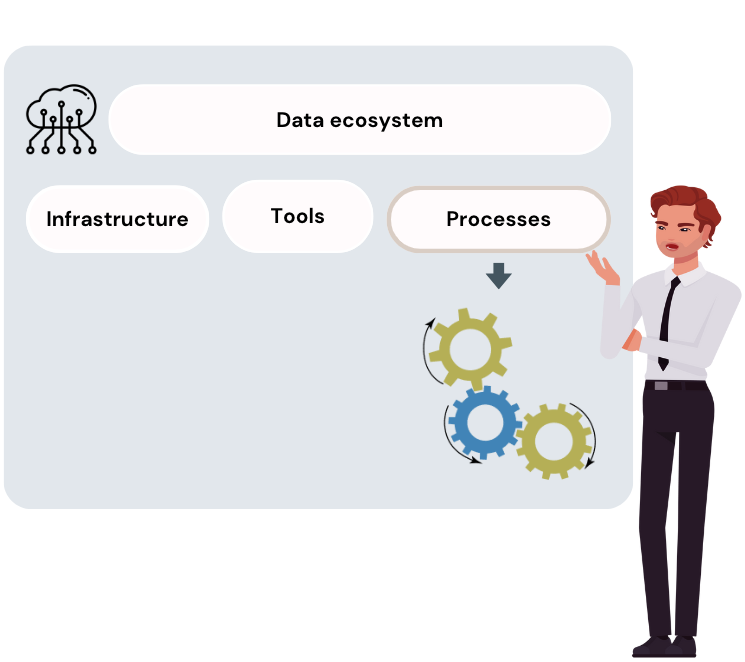
Collaboration processes
- Data producers and data consumers collaborate to define data requirements and generate actionable insights
- Processes can establish feedback loops where data consumers provide input to data producers
- Such processes encourage collaboration, clear communication channels and ensure that data insights are relevant, accessible, and comprehensible

Quality control processes
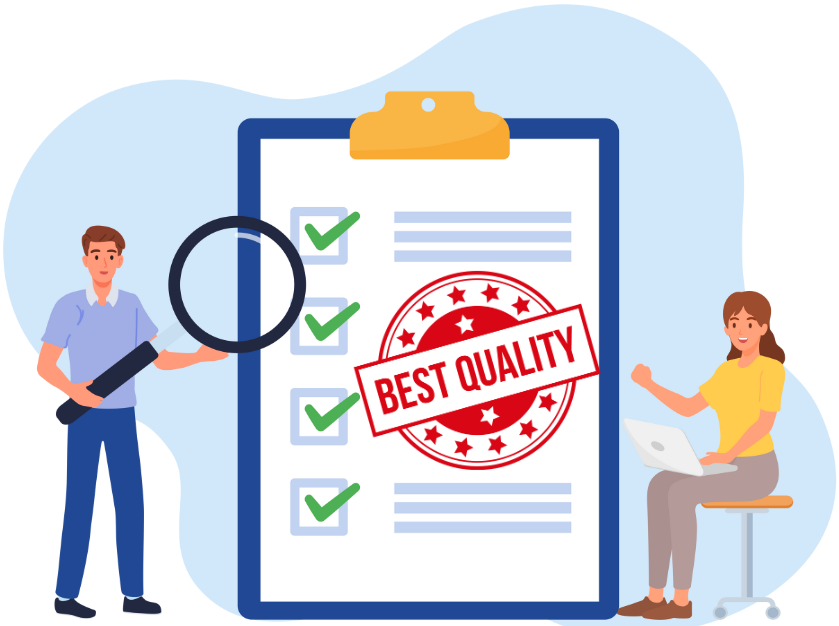
- Quality control processes involve the use of data validation checks and automated tests to verify data accuracy and integrity
- Version control processes track changes made to data and code to audit and reproduce accurately
- Product deployment processes make sure the deployment of new data products is done without issues
Processes for sharing insights
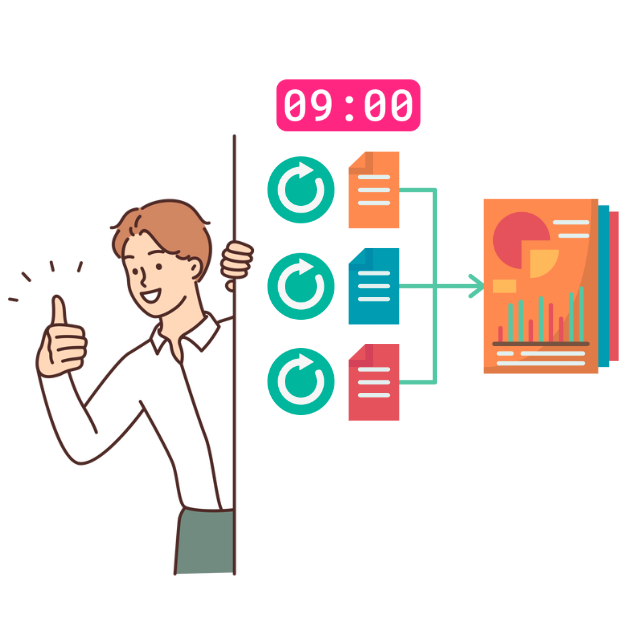
- Processes to share insights from data products, aligning refresh schedules with business needs
- For example, a sales dashboard's data source scheduled to refresh before a 10 am sales review meeting, enabling timely decision-making
- Automated processes can trigger alerts when specific data thresholds or anomalies are detected in important KPIs
Process standardization

- Data-fluent data producers focus on the standardization of processes to enable scalability and efficiency
- For example, creating templates and standardized spreadsheet formats to make it easier to develop financial models and reports
The organizational structure
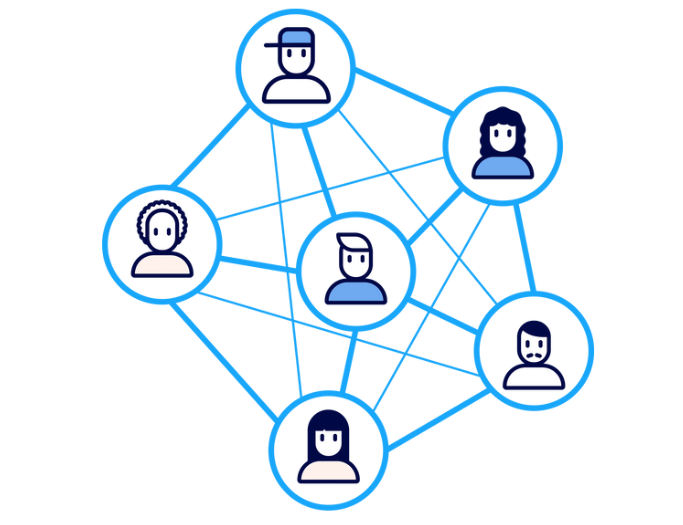
- It refers to how the teams and roles are structured to enable scalable decision-making
Centralized organizational structure
- Centralized structure where data expertise is consolidated within a single team or department
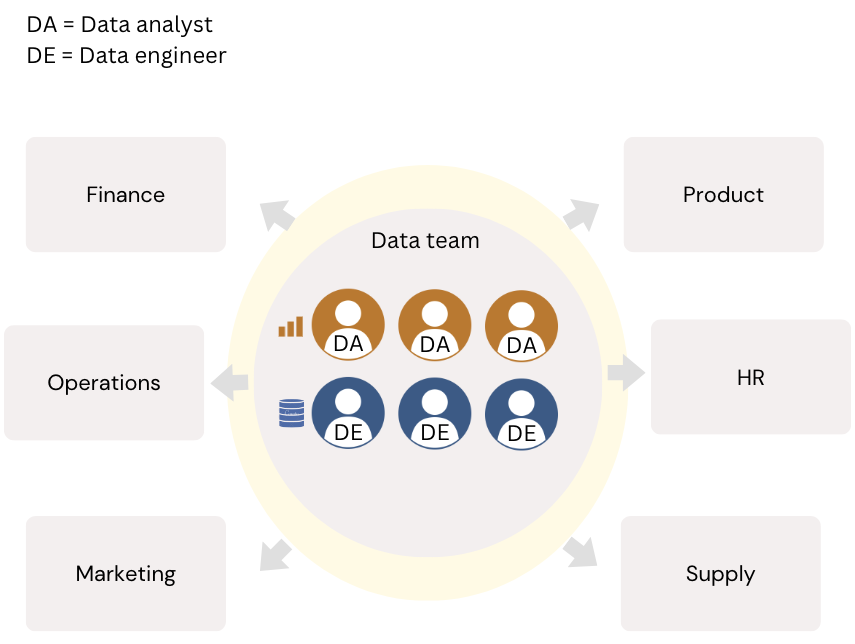
De-centralized organizational structure
- Decentralized structure where data experts are embedded within various business units
- Each unit has its own analytics team responsible for data activities specific to its function
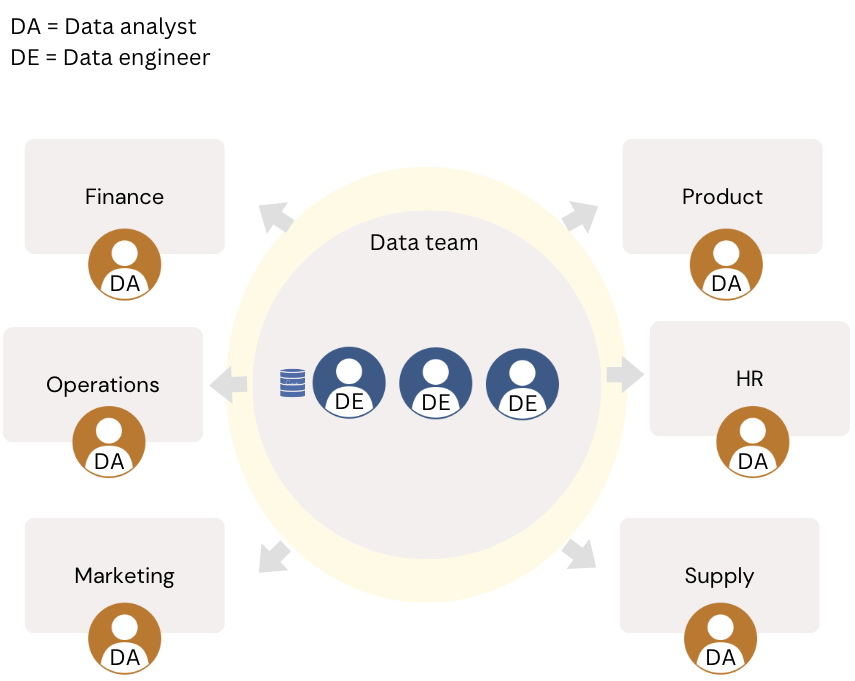
Hybrid structure for data fluency
- Mature data-fluent organizations often utilize a hybrid structure that combines elements of both centralized and decentralized approaches
- It includes a central data team
- Simultaneously, data analysts are embedded within different business units
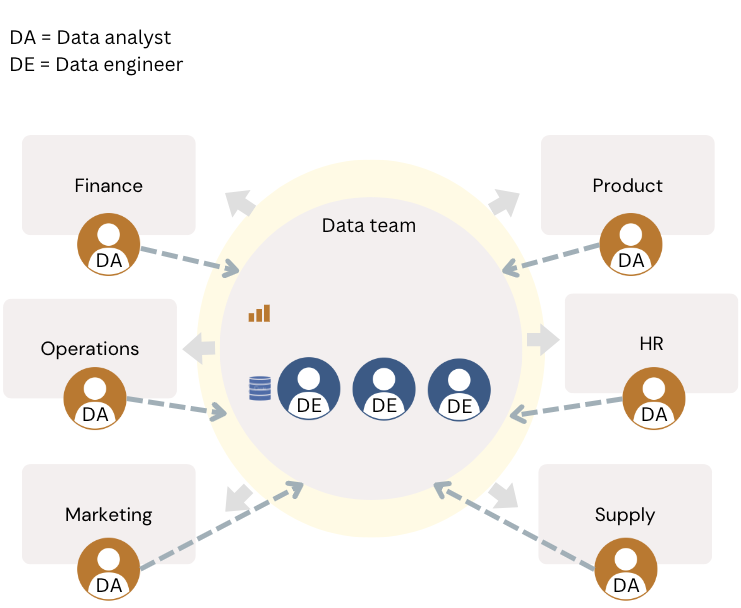
Let's practice!
Data Fluency

